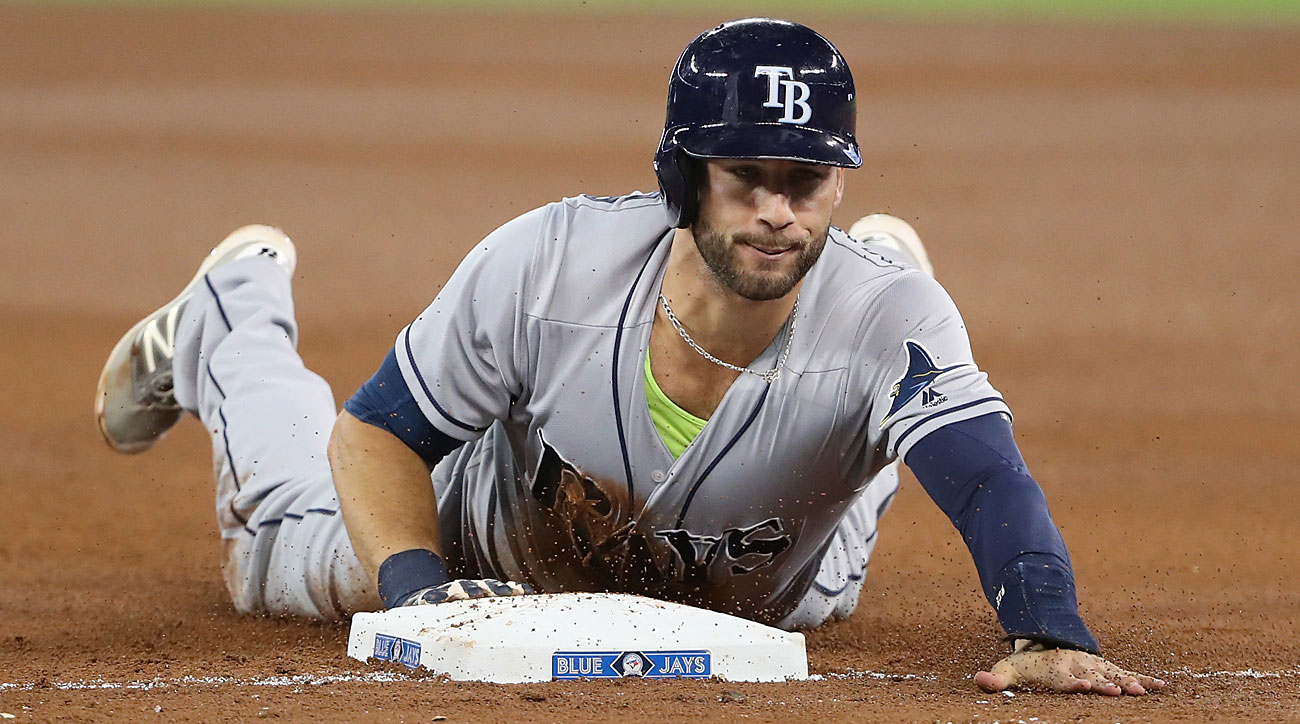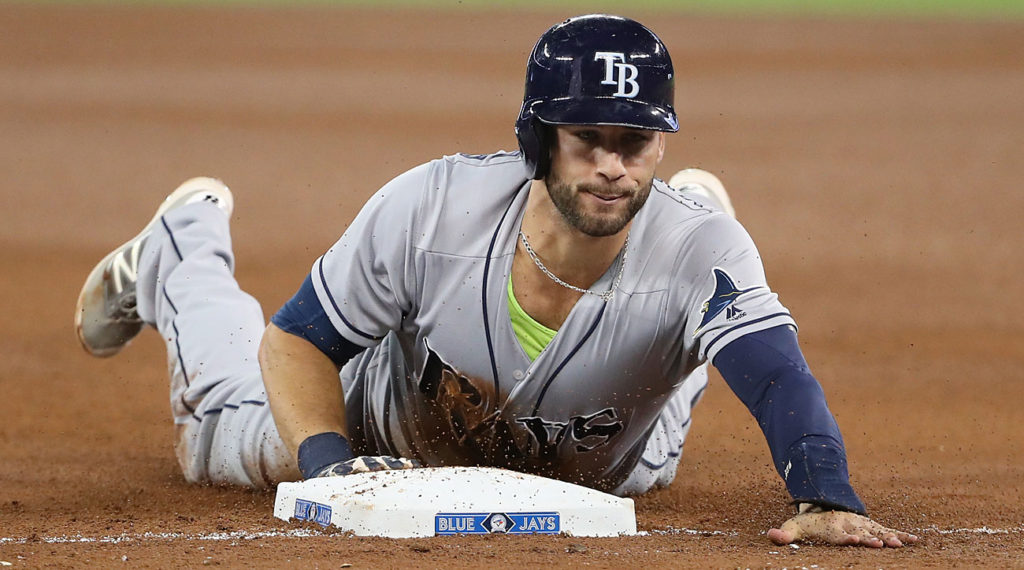
A little more than a week before the start of Spring Training, Baseball Prospectus released its PECOTA projections for the 2018 season. In spite of the trade that sent the face of the franchise to San Francisco, the projection system forecasts the Rays as the fifth best team in the American League, and third best team in the AL East with a mean average of 84 wins to 78 losses. If the Rays were to end as the season as the fifth best team in the AL, they would find themselves in the playoffs for the first time since 2013. Note: Any additions or subtractions to or from the roster will affect the mean projection.
How will the Rays fare in the East? Here are a few highlights, while a full projection is available at the Baseball Prospectus site (linked above) with a paid subscription.
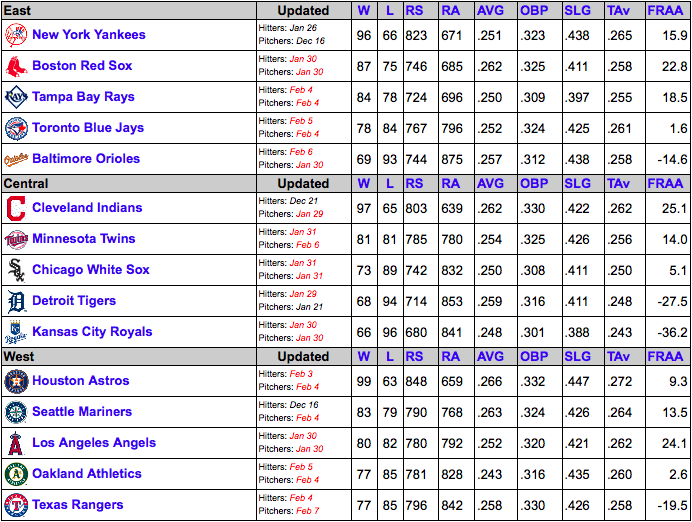
- PECOTA projects the Rays to be, well…the Rays in 2018. Their projected 724 runs are 54 more than they plated in 2017, yet just 10 runs better than the Tigers, who are projected to end their 2018 campaign with a 68-94 record. The projected .250 BA/.309 OBP/.397 SLG slash line is similar to that of the .245 BA/.317 OBP/.422 SLG line collected by the team last season ― albeit with much less pop.
- PECOTA projects Tampa Bay to allow the fifth fewest runs in the American League at 696 ― 14 more than the Red Sox, the Rays closest competitor in that category.
- Overall, the Rays true average (Tav; a measure of total offensive value scaled to batting average) of .255 is 10 points higher than last season’s batting average, while their projected .397 SLG is the lowest in the AL East.
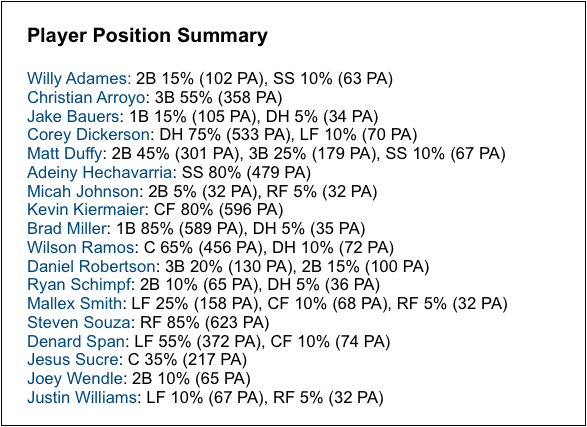
PECOTA sees Christian Arroyo (not Matt Duffy) spending the most time at third base, while Duffy is projected to slot in at at second base, and Brad Miller at first. Willy Adames, Jake Bauers, and Justin Williams are all projected to be promoted in 2018, however, don’t expect them to break camp with the Rays.
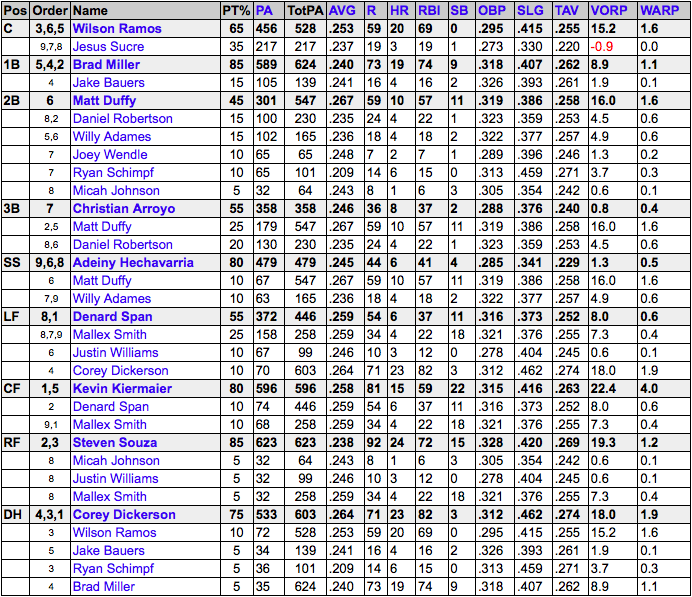
- Not surprisingly, Wilson Ramos will to get the majority of playing time over Jesus Sucre (65% vs 35%) behind the plate.
- Miller is projected to post a 1.1 WARp at first, although he is expected to bounce back from an abysmal 2017 to the tune of a .240 BA/.318 OBP/.407 SLG/.262 Tav.
- Unsurprisingly, PECOTA likes Kevin Kiermaier for a 4.0 WARp in center — the strongest position for the Rays.
- PECOTA likes Adeiny Hechavarria at short, although he is projected to post just a 0.5 WARp. Compare that to Matt Duffy, who is projected to perform to a 1.6 WARp even though he’ll only spend 10% of his playing time there.
- Denard Span is projected to get 55% of the reps in left field, followed by newcomer Mallux Smith with 25% of the reps. The tandem is projected to combine for a 1.0 WARp.
- Corey Dickerson’s .274 TAv that is higher than anyone else on the team, and because of it he looks to receive the most playing time at DH.
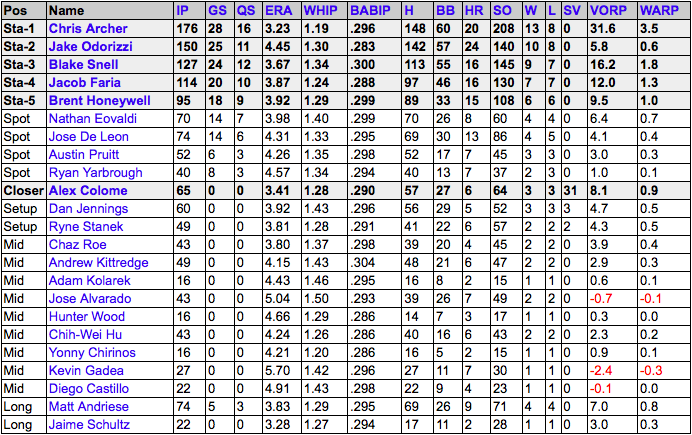
- PECOTA projects the starting rotation to be Chris Archer (176 IP, 3.5 WARp), Jake Odorizzi (150 IP, 0.6 WARp), Blake Snell (127 IP, 1.8 WARp), Jacob Faria (114 IP, 1.3 WARp), and Brent Honeywell (95 IP, 1.0 WARp). Nathan Eovaldi, Jose De Leon, Austin Pruitt and Ryan Yarbrough also may factor into the rotation in some capacity.
-
PECOTA projects the key Rays bullpen pieces as the following: Alex Colome (closer); Dan Jennings and Ryne Stanek (setup); Chaz Roe, Andrew Kittredge, Jose Alvarado and Chih-Wei Hu (middle-relief); Matt Andriese (long relief).
-
There is one category that I haven’t touched upon yet, and that’s FRAA — fielding runs above average. According to Baseball Prospectus, FRAA is an “individual defensive metric created using play-by-play data with adjustments made based on plays made, the expected numbers of plays per position, the handedness of the batter, the park, and base-out states.” In other words, the biggest difference between FRAA and similar defensive metrics is the data and philosophy used. While other metrics analyze zone-based fielding data, FRAA focuses on play-by-play data, focusing on the number of plays made compared to the average number of plays made by a player at said position.
-
PECOTA (by way of FRAA) pegs Tampa Bay’s defense to save 18.5 runs above average — fourth best in the American League. When compared with the other teams in the AL East, the Rays sit in second place behind the Red Sox (22.8 FRAA). Look on the bright side, the Baltimore Orioles and are projected for a -14.6 FRAA.
Conclusion
Projecting an upcoming season is not an exact science. Neil Paine (538 blog) said it best:
There’s a statistical limit to how accurate any projection about a team can be in the long run. Years ago, sabermetrician Tom Tango researched the amount of talent and luck that go into team winning percentages and found that chance explains one-third of the difference between two teams’ records. That makes it hard to predict how many times a team will win over a season. The smallest possible root-mean-square error (a mathematical way of testing a prediction’s accuracy) for any projection system over an extended period of time is 6.4 wins. In a single season, forecasters can — and do — beat an RMSE of 6.4. But whenever that happens, it’s due to luck. The amount of random variance that goes into team records makes the 6.4 barrier literally impossible to beat over a large number of seasons. Over time, no forecaster’s system can ever do better.
I know this offseason has been marred with rumors of a rebuild, yet the Rays could still end the season playing relevant ball in October. A projected 84 win season — 90 or 78, thanks a six game margin of error — has got to make those of us who feel like we’ve been kicked in the guts at least optimistic for something better than what most have predicted.

